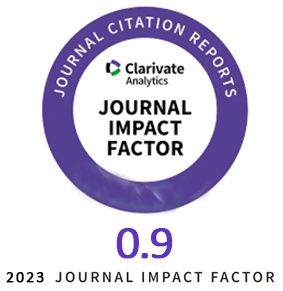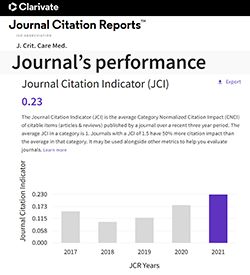To date, recommendations for the implementation of awake prone positioning in patients with hypoxia secondary to SARSCoV2 infection have been extrapolated from prior studies on respiratory distress. Thus, we carried out a systematic review and metaanalysis to evaluate the benefits of pronation on the oxygenation, need for endotracheal intubation (ETI), and mortality of this group of patients. We carried out a systematic search in the PubMed and Embase databases between June 2020 and November 2021. A randomeffects metaanalysis was performed to evaluate the impact of pronation on the ETI and mortality rates. A total of 213 articles were identified, 15 of which were finally included in this review. A significant decrease in the mortality rate was observed in the group of pronated patients (relative risk [RR] = 0.69; 95% confidence interval [CI]: 0.480.99; p = 0.044), but no significant effect was observed on the need for ETI (RR = 0.79; 95% CI: 0.631.00; p = 0.051). However, a subgroup analysis of randomized clinical trials (RCTs) did reveal a significant decrease in the need for this intervention (RR = 0.83; 95% CI: 0.710.97). Prone positioning was found to significantly reduce mortality, also diminishing the need for ETI, although this effect was statistically significant only in the subgroup analysis of RCTs. Patients’ response to awake prone positioning could be greater when this procedure is implemented early and in combination with noninvasive mechanical ventilation (NIMV) or highflow nasal cannula (HFNC) therapy.
Category Archives: JCCM 2023, Vol. 9, Issue 2
Artificial Intelligence: The Next Blockbuster Drug in Critical Care?
The realm of critical care medicine is always waiting for the game-changing innovation – that elusive breakthrough poised to dramatically transform practice and yield remarkable results. Various contenders have come and gone: surfactant therapy, synthetic colloids, drotrecogin alfa [1-3]. While some have been consigned to the annals of history, a select few, such as low-tidal-volume ventilation, have endured [4]. Others re-emerge time and again, hoping that they’ll have an evidence-based role somewhere. The level of excitement is not always correlated with the staying power of the innovation, and sometimes the hype can overshadow the reality. [More]
End-of-life Care in the Intesive Care Unit and Nursing Roles in Communicating with Families
Introduction: Professionals in Intensive Care Units face death, shifting their role from therapists to caregivers in end-of-life management. The nursing attitude and response to death has been shown to affect the quality of palliative care and end-of-life services that are interrelated services. Aim of the study: The aim of this research was to evaluate the professional attitude of nurses towards the care of the families of critically ill patients in the ICU, leading to the emergence of specific attitudes, relating them to their demographic and professional characteristics, with the aim of drawing conclusions for the improvement of quality in end-of-life care.
Material and Methods: The sample of the study was 81 nurses from a large tertiary hospital. Participants completed the “Nurse Activities for Communicating with Families” (NACF) questionnaire. The questions are about ways in which nurses can help the patient’s family during the patient’s stay in the ICU.
Results: The results revealed that the nurses took actions related to the information and psychological support of the patient’s family. On the contrary, they did not focus on the spiritual / religious needs of the patient and the needs of the family based on their cultural background.
Conclusions: The professional treatment of staff is characterized by compassion and empathy, but it is necessary to train them on important issues related to diversity, including the religious, spiritual values and beliefs of patients and their relatives.
Therapeutic Hypothermia Following Cardiopulmonary Arrest: A Systematic Review and Meta-Analysis with Trial Sequential Analysis
Introduction: The risk-benefit profile of therapeutic hypothermia is controversial with several randomized controlled trials providing conflicting results. Aim of Study: The purpose of this systematic review and meta-analysis was to determine if therapeutic hypothermia provides beneficial neurologic outcomes relative to adverse effects.
Material and Methods: MEDLINE and EMBASE databases were searched for randomized controlled trials of post-cardiac arrest patients comparing therapeutic hypothermia (~33 degrees Celsius) to normothermia or the standard of care (36 – 38 degrees Celsius). Data were collected using the Covidence systematic review software. Statistical analysis was performed by Review Manager software. Risk of bias, sensitivity, and heterogeneity were analyzed using the Cochran’s Collaboration tool, trial sequential analysis (TSA) software, and I2 statistic respectively.
Results: A total of 1825 studies were screened and 5 studies (n=3614) were included. No significant differences existed between the hypothermia group and normothermia for favorable neurologic outcome (risk ratio [RR] 1.17, 95% confidence interval [CI] 0.97 to 1.41) or all-cause mortality (RR 0.97, 95% CI 0.89 to 1.05). When compared to normothermia, the hypothermia group had greater risk of adverse effects (RR 1.16, 95% CI 1.04 to 1.28), which was driven by the onset of arrhythmias. Subgroup analyses revealed that therapeutic hypothermia provided greater neurologic benefit in trials with a higher percentage of subjects with shockable rhythms (RR 0.73, 95% CI 0.6 to 0.88). Trial sequential analysis revealed statistical futility for therapeutic hypothermia and favorable neurologic outcome, mortality, and adverse effects.
Conclusions: Therapeutic hypothermia does not provide consistent benefit in neurologic outcome or mortality in the general cardiac arrest population. Patients with shockable rhythms may show favorable neurologic outcome with therapeutic hypothermia and further investigation in this population is warranted. Any potential benefit associated with therapeutic hypothermia must be weighed against the increased risk of adverse effects, particularly the onset of arrhythmias.
Aerosolized Plus Intravenous Polymyxin B Versus Colistin in the Treatment of Pandrug-Resistant Klebsiella Pneumonia-mediated Ventilator-Associated Pneumonia: A Retrospective Cohort Study in Bangladesh
Background: Pandrug-resistant Klebsiella pneumoniae ventilator associated pneumonia (VAP) is associated with high rate of mortality in intensive care unit (ICU) and has been recognized as a difficult-to-treat infection worldwide. Polymyxin B or colistin-based combination therapies are frequently used worldwide though microbial eradication rate is not promising.
Aim: The aim of this study is to compare the clinical outcome of intravenous with aerosolized polymyxin B versus colistin in the treatment of pandrug-resistant K. pneumoniae VAP.
Methods: This retrospective cohort study was conducted on 222 mechanically ventilated patients admitted from May 11, 2019 to October 19, 2020. K. pneumoniae isolates were resistant to all available antibiotics, including polymyxins in culture sensitivity tests. As treatment, polymyxin B and colistin was administered in intravenous and aerosolized form concurrently twice daily in 106 patients and 116 patients in PMB and CLN group, respectively for 14 days. Survival rate, safety, and clinical outcomes were compared among the groups. The Cox proportional-hazard model was performed to calculate hazard ratio (HR) with 95% confidence intervals (CI).
Results: Patients in PMB group showed more microbial eradication than the patients CLN group [68.1% (n=116)/83% (n=106), respectively; P <0.05). The median day of intubation and ICU stay in PMB group was shorter than that in CLN group [10 (IQR: 9-12.25) vs. 14 (IQR: 11-19), P <0.05; 12 (IQR: 10-14) vs. 15 (IQR: 9-18.5), P=0.072, respectively] with reduced 60-day all-cause mortality rate [15% (n=106) vs. 21.55% (n=116)]. Polymyxin B improved survival compared to colistin (multivariate HR: 0.662; 95% CI=0.359- 1.222, P=0.195).
Conclusions: Concurrent administration of intravenous and aerosolized polymyxin B in patients with pandrug-resistant K. pneumoniae-associated VAP revealed better microbial eradication, reduced the length of intubation and ICU stay, and improved survival rate compared to colistin.
Post Hospital Discharge Functional Recovery of Critical Illness Survivors. Systematic Review
Background: Millions of people face critical illnesses and need to be hospitalized in an Intensive Care Unit (ICU) annually worldwide. Despite the fact that survival rates of these patients have increased, they develop various cognitive, psychological and functional impairments. This study aims to investigate the significance of the recovery interventions following intensive care unit discharge, the effectiveness of the rehabilitative protocols and their possible deficits.
Methods: MEDLINE (PubMed) and Physiotherapy Evidence Database (PEDro) were searched for studies analyzing the recovery potentials post-ICU among adults, who spent at least 48 hours at the ICU. Methodological quality of the studies was assessed via PEDro Scale.
Results: Nine randomized controlled trials were included. These took place mainly at specialized rehabilitation gyms as well as patients home environments. Studies analyses showed that treatment group showed improvement in functional ability in relation to control group. Nevertheless, differences between two groups were not statistically significant (P<0.05). The majority of studies assessed cardiorespiratory endurance and muscular strength.
Conclusions: The included rehabilitation programs were determined to be effective. Although they didn’t prove any statistically significant difference between groups, quality of life enhancements and stress reduction were reported. Hence, new randomized controlled trials are required in order to provide more accurate data on the potential benefits of rehabilitation strategies among post-ICU patients.
Multiple Organ Dysfunction Secondary to Herpes Simplex Virus -1 Reactivation After Treatment With Dexamethasone and Sarilumab for Covid-19 Disease
Introduction: The immunological response to the SARS-CoV-2 virus and the treatment of COVID-19 disease present a potential susceptibility to viral reactivation, particularly Herpes simplex virus-1 (HSV-1).
Case Presentation: A 49-year-old female presented to hospital with severe COVID-19 pneumonitis and was given sarilumab and dexamethasone. She was intubated and ventilated in the intensive care unit (ICU) and initially demonstrated biochemical and clinical evidence of improvement. This was followed by a severe acute deterioration in respiratory, renal, and cardiovascular function, accompanied by a vesicular rash on the face. Polymerase chain reaction confirmed HSV-1 reactivation and treatment with acyclovir was commenced. After 49 days in ICU the patient was successfully weaned from all organ support, and she made a satisfactory recovery.
Conclusions: HSV-1 reactivation is common in COVID-19 and likely contributes to poorer clinical outcomes. The mechanism causing susceptibility to viral reactivation is not clearly defined, however, the development of critical illness induced immunosuppression via dysfunction of interferon and interleukin pathways is a likely mechanism. This effect could be perpetuated with immunosuppressant medications, although further research is needed to characterise this phenomenon.
Volume 9, Issue 2, April 2023
Lung Injury Risk in Traumatic Brain Injury Managed With Optimal Cerebral Perfusion Pressure Guided-Therapy
Introduction: Management of traumatic brain injury (TBI) has to counterbalance prevention of secondary brain injury without systemic complications, namely lung injury. The potential risk of developing acute respiratory distress syndrome (ARDS) leads to therapeutic decisions such as fluid balance restriction, high PEEP and other lung protective measures, that may conflict with neurologic outcome. In fact, low cerebral perfusion pressure (CPP) may induce secondary ischemic injury and mortality, but disproportionate high CPP may also increase morbidity and worse lung compliance and hypoxia with the risk of developing ARDS and fatal outcome. The evaluation of cerebral autoregulation at bedside and individualized (optimal CPP) CPPopt-guided therapy, may not only be a relevant measure to protect the brain, but also a safe measure to avoid systemic complications.
Aim of the study: We aimed to study the safety of CPPopt-guided-therapy and the risk of secondary lung injury association with bad outcome.
Methods and results: Single-center retrospective analysis of 92 severe TBI patients admitted to the Neurocritical Care Unit managed with CPPopt-guided-therapy by PRx (pressure reactivity index). During the first 10 days, we collected data from blood gas, ventilation and brain variables. Evolution along time was analyzed using linear mixed-effects regression models. 86% were male with mean age 53±21 years. 49% presented multiple trauma and 21% thoracic trauma. At hospital admission, median GCS was 7 and after 3-months GOS was 3. Monitoring data was CPP 86±7mmHg, CPP-CPPopt -2.8±10.2mmHg and PRx 0.03±0.19. The average PFratio (PaO2/FiO2) was 305±88 and driving pressure 15.9±3.5cmH2O. PFratio exhibited a significant quadratic dependence across time and PRx and driving pressure presented significant negative association with PFRatio. CPP and CPPopt did not present significant effect on PFratio (p=0.533; p=0.556). A significant positive association between outcome and the difference CPP-CPPopt was found.
Conclusion: Management of TBI using CPPopt-guided-therapy was associated with better outcome and seems to be safe regarding the development of secondary lung injury.




